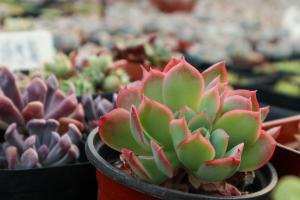1、 Curing method
1. Temperature: Magnolia officinalis is a cool plant. Generally speaking, the annual average temperature in the areas where it is suitable for distribution is generally between 14 and 20 degrees. In the coldest time, the average temperature should also reach between 3 and 9 degrees, so that it can survive the winter safely
2. Light: Magnolia officinalis likes light. In its growth period, it has high requirements for sunshine, otherwise its growth will be very slow, and it is easy to grow in vain. Therefore, in this season, do not be too shady. In case of strong light, you can shade slightly, but don't completely hide the light

3. Watering: Magnolia officinalis likes to be wet, and the requirement for air humidity is also very high. And because its root system is relatively developed, its waterlogging resistance is good. It is necessary to replenish water in time during the growth period to ensure moisture. But in winter, especially when the temperature is very low, we have to control the water
4. Fertilization: it has a certain demand for fertilizer, but not too much. In addition to the fixed base fertilizer, the number of topdressing can be controlled at twice a year, which is not necessary

2、 Breeding skills
1. Propagation: it can be propagated by sowing. From September to October, you can be ready to collect fruits and seeds. After harvest, store it in moist sand. In the spring of the next year, it can be taken out and sown. Because there is a waxy layer on its surface, which hinders its germination, it needs to be removed before sowing. The method of "drill sowing" can be adopted. The row spacing can be about 30 cm, and the distance between each grain can be between three and six cm
2. Weeding: this step is more important because there are many weeds every once in a while. Generally speaking, weed at least twice a year. After weeding, topdressing shall be carried out

3、 Diagnosis and treatment problems
1. Diseases: the main species are "leaf blight", which can be controlled in Bordeaux. There will also be "bacterial wilt". In addition to spraying, the substrate must be disinfected, such as lime
2. Insect pest: it is mainly "Brown longicorn beetle". The harm of adults is relatively large. The main task is to kill its adults

4、 Other issues
1. Toxicity: it is not toxic. Moreover, it is a good medicinal material
2. Whether it can be raised at home: generally not. First, it is relatively large and not suitable for home. In addition, it also protects plants


 jackfruit
jackfruit snake plant
snake plant hibiscus
hibiscus hydrangea
hydrangea lavender
lavender Green roses climb al...
Green roses climb al... If you don't pay att...
If you don't pay att... Management of four g...
Management of four g...


































